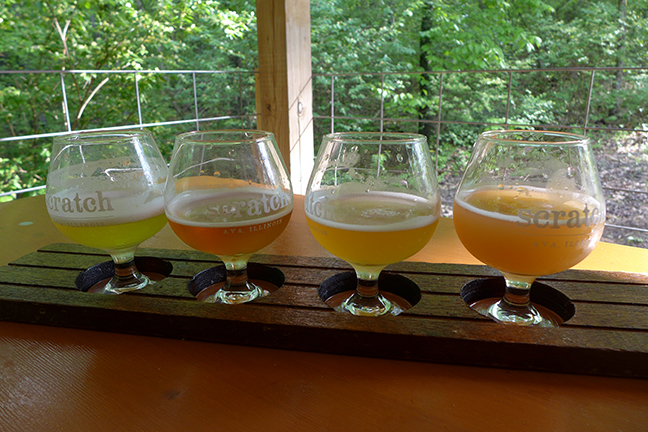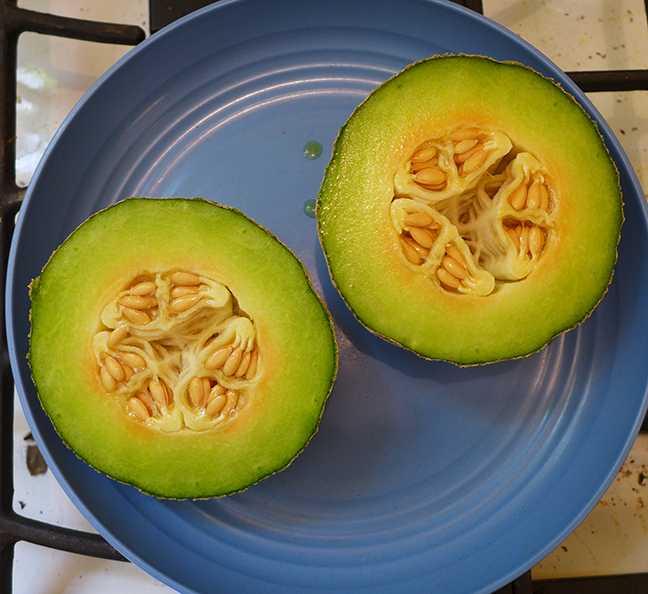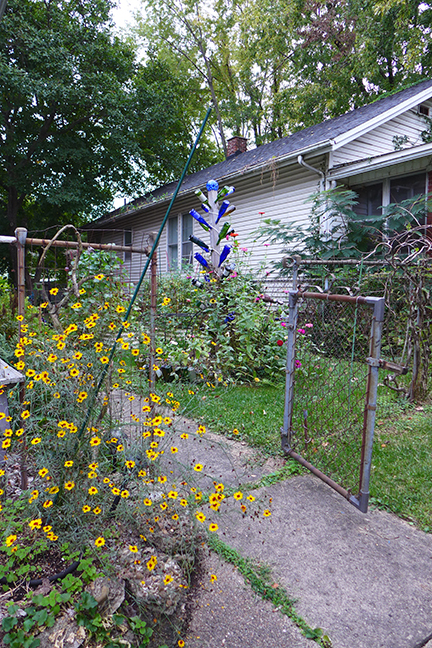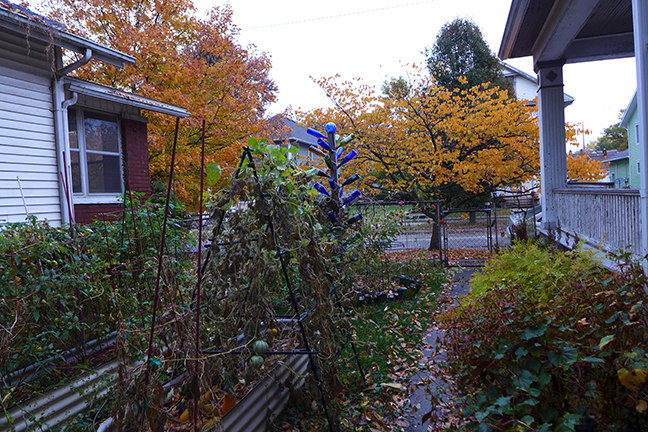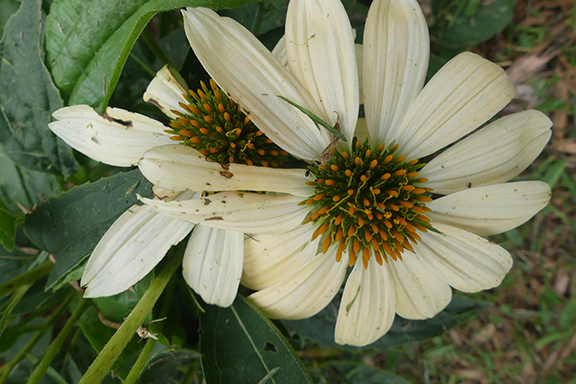April was rough with way too many severe storms, violent wind, and tornadoes coming way too close to our house. The worst of it was April 2 when we were awake at 5:00 am and heading to the basement to shelter from tornadoes. Thankfully we made it through the month without storm damage.
Meanwhile, everything emerged in my garden. Some of my favorites were the ferns as they curled their way out of the ground and expanded into their spots in the garden. I always love their changing structures and textures. Another plant with a beautiful emergence is the peony whose leaves twist and turn as they expand from the soil. I also love the colors and textures of the epimedium leaves that line up and expand together in a team of hearts–not to mention the fairy-like epimedium flowers held on delicate stems.
The early spring daffodils and tulips had mostly passed by the start of April and were replaced by things like wild geranium, tiarella, irises, and azaleas. The colors in my garden intensified as the plants began to fill the formerly-empty space. My berries bloomed, and my garlic grew ever larger.
I didn’t do much work in my garden, spending the month mostly just watching its progress and taking pictures. I did start a few tomato plants and sweet potato slips. Many years I’ve felt like I got them going too early and had to try to hold overly-eager plants indoors for too long. Trying to avoid that, I think I may have gotten them started a little later than I could have, though it’s always difficult to know what to do.























































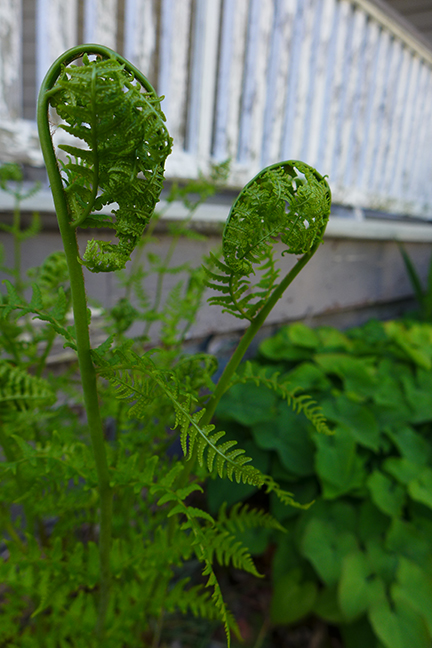



















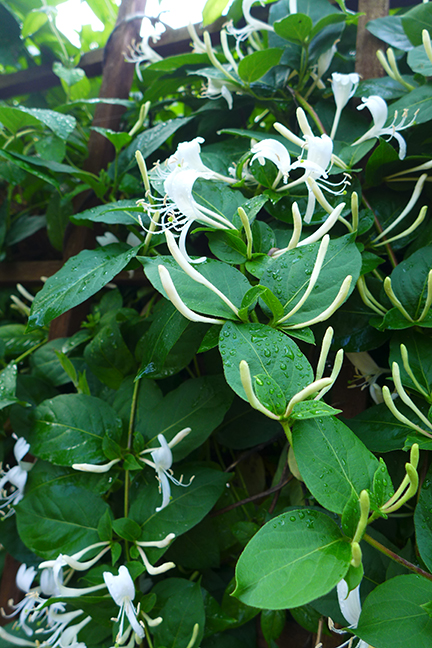

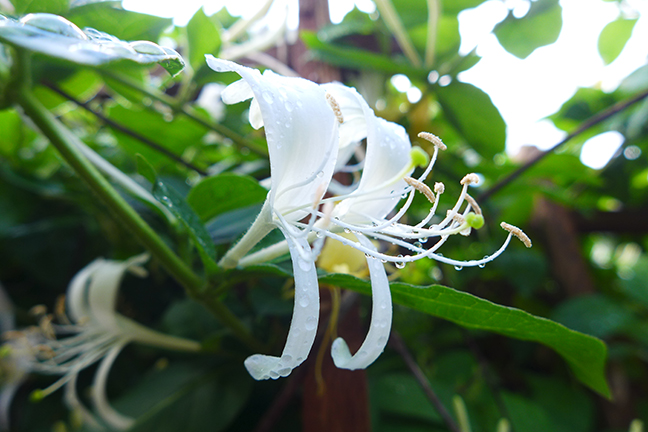






On the last weekend of April, John and I were able to go to Scratch Brewing, one of our favorite little breweries. It’s located in Southern Illinois and we’ve gone several times before, though it had been almost a year since our last trip. The beers are hyperlocal and incorporate many plants that the brewers have foraged from the land around the brewery. The flavors are complex and unique.
We arrived late in the afternoon and shared several rounds of samplers along with a couple wood fired pizzas. Beers on tap that weekend included one brewed with dried oak, hickory, and maple leaves; one brewed in a copper kettle with wild cherry bark; one brewed with elderberries; and one brewed with chanterelle mushrooms. All of these items were grown or foraged nearby. The pizzas also featured local foods for their toppings.
In addition to having really interesting drinks and food, Scratch has a beautiful setting. The indoors is full of artwork and the outdoors features a variety of rustic seating areas. We ate in the roofed area built around a log cabin. We had a view of the woods, and an Eastern phoebe had a nest nearby in the eaves so we watched her come and go.
We spent the night nearby, then checked out Inspiration Point in the Shawnee National Forest the next morning before going home. At first, Inspiration Point didn’t seem all that inspiring, but then we braved the steep little side trail and gusty winds to get out on the actual point where the view was, in fact, inspirational. It was a fun little trip.

